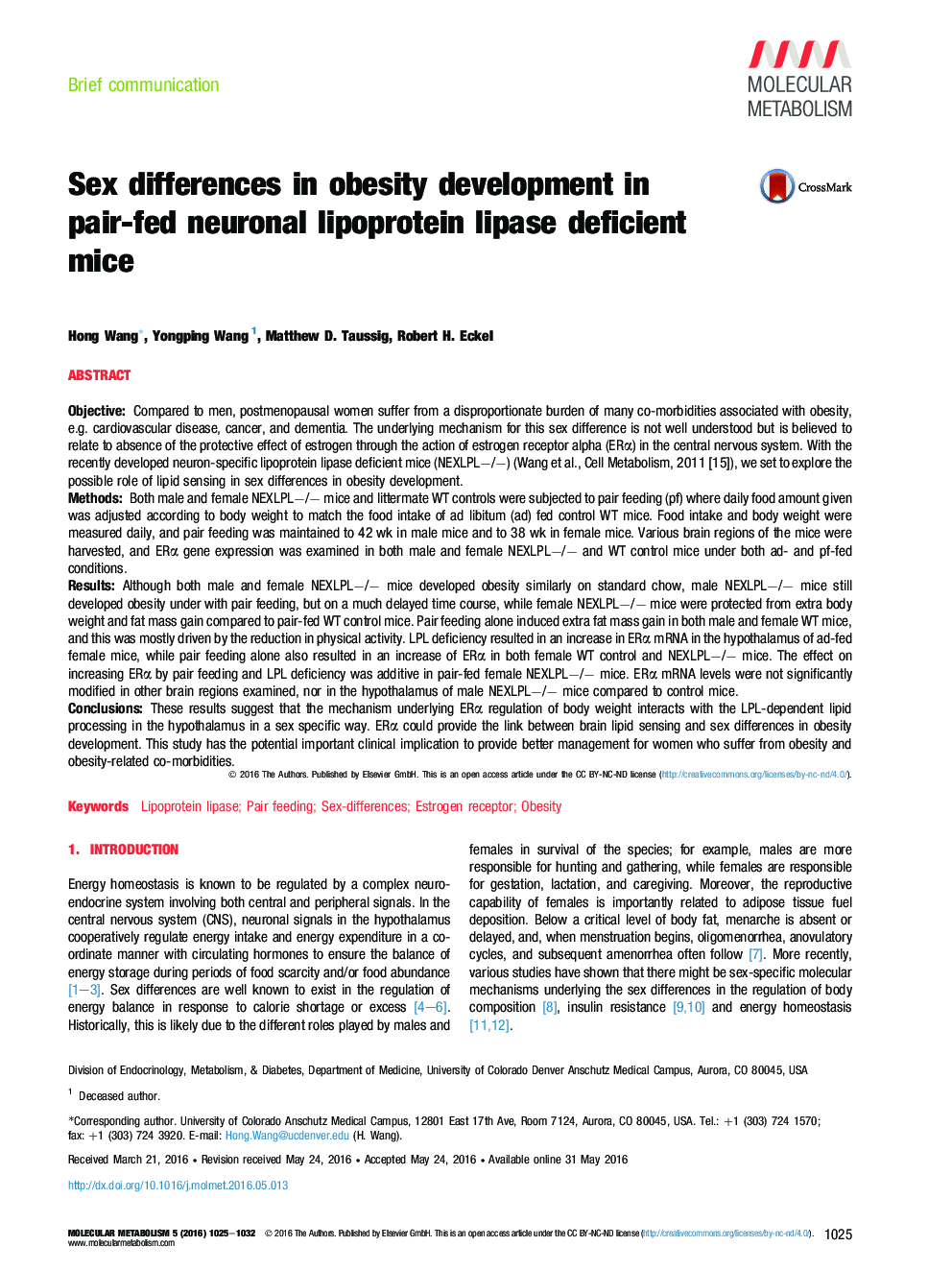| کد مقاله | کد نشریه | سال انتشار | مقاله انگلیسی | نسخه تمام متن |
|---|---|---|---|---|
| 5618822 | 1406041 | 2016 | 8 صفحه PDF | دانلود رایگان |
- Male neuronal lipoprotein lipase deficient mice are still obese with pair feeding.
- Female neuronal lipoprotein lipase deficient mice are not obese with pair feeding.
- Neuronal LPL deficiency results in an increase in ERa expression in female mice.
- Pair feeding alone also results in an increase in ERa in both male and female mice.
- ERa provides the link between brain lipid sensing and sex differences in obesity.
ObjectiveCompared to men, postmenopausal women suffer from a disproportionate burden of many co-morbidities associated with obesity, e.g. cardiovascular disease, cancer, and dementia. The underlying mechanism for this sex difference is not well understood but is believed to relate to absence of the protective effect of estrogen through the action of estrogen receptor alpha (ERα) in the central nervous system. With the recently developed neuron-specific lipoprotein lipase deficient mice (NEXLPLâ/â) (Wang et al., Cell Metabolism, 2011 [15]), we set to explore the possible role of lipid sensing in sex differences in obesity development.MethodsBoth male and female NEXLPLâ/â mice and littermate WT controls were subjected to pair feeding (pf) where daily food amount given was adjusted according to body weight to match the food intake of ad libitum (ad) fed control WT mice. Food intake and body weight were measured daily, and pair feeding was maintained to 42 wk in male mice and to 38 wk in female mice. Various brain regions of the mice were harvested, and ERα gene expression was examined in both male and female NEXLPLâ/â and WT control mice under both ad- and pf-fed conditions.ResultsAlthough both male and female NEXLPLâ/â mice developed obesity similarly on standard chow, male NEXLPLâ/â mice still developed obesity under with pair feeding, but on a much delayed time course, while female NEXLPLâ/â mice were protected from extra body weight and fat mass gain compared to pair-fed WT control mice. Pair feeding alone induced extra fat mass gain in both male and female WT mice, and this was mostly driven by the reduction in physical activity. LPL deficiency resulted in an increase in ERα mRNA in the hypothalamus of ad-fed female mice, while pair feeding alone also resulted in an increase of ERα in both female WT control and NEXLPLâ/â mice. The effect on increasing ERα by pair feeding and LPL deficiency was additive in pair-fed female NEXLPLâ/â mice. ERα mRNA levels were not significantly modified in other brain regions examined, nor in the hypothalamus of male NEXLPLâ/â mice compared to control mice.ConclusionsThese results suggest that the mechanism underlying ERα regulation of body weight interacts with the LPL-dependent lipid processing in the hypothalamus in a sex specific way. ERα could provide the link between brain lipid sensing and sex differences in obesity development. This study has the potential important clinical implication to provide better management for women who suffer from obesity and obesity-related co-morbidities.
159
Journal: Molecular Metabolism - Volume 5, Issue 10, October 2016, Pages 1025-1032
